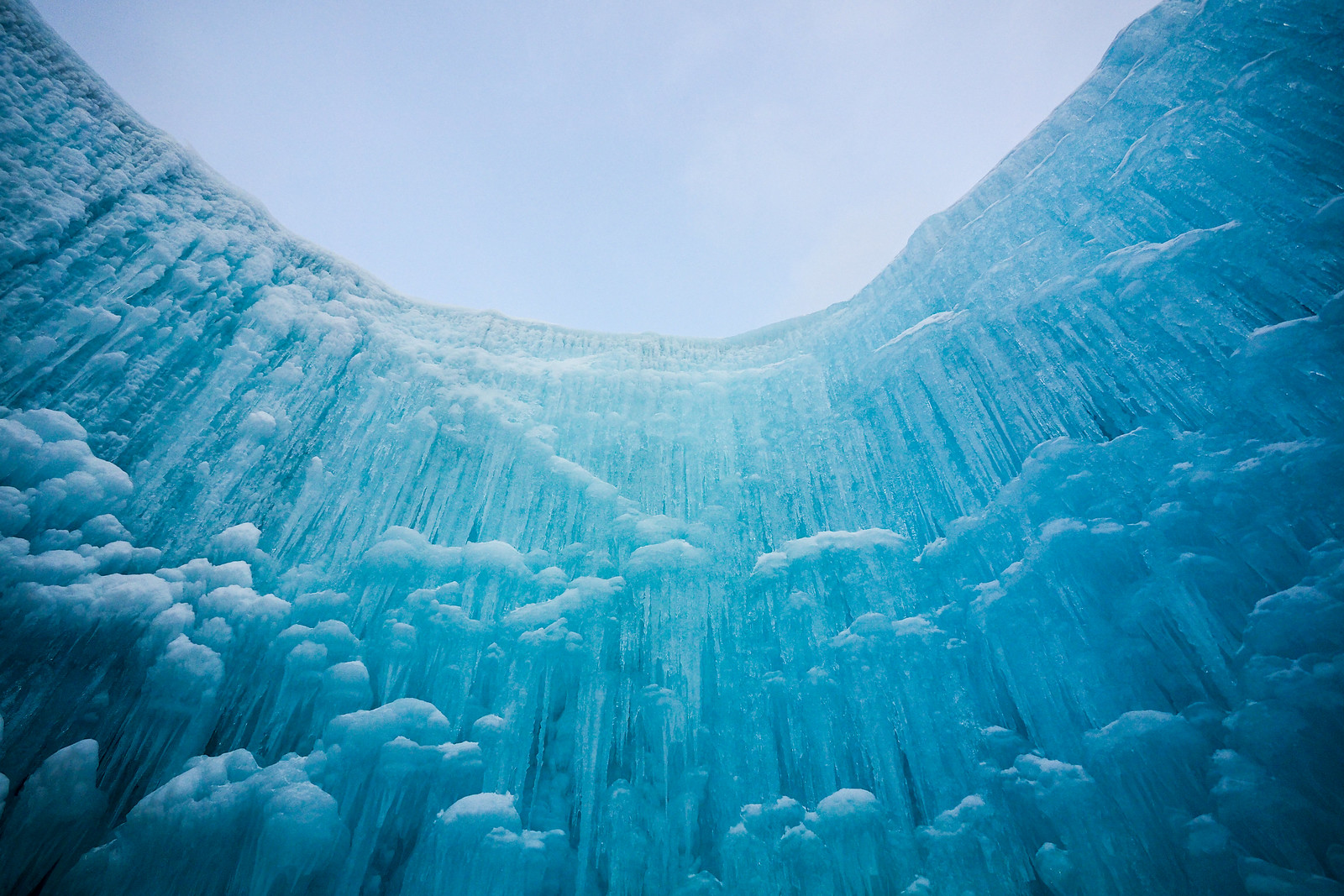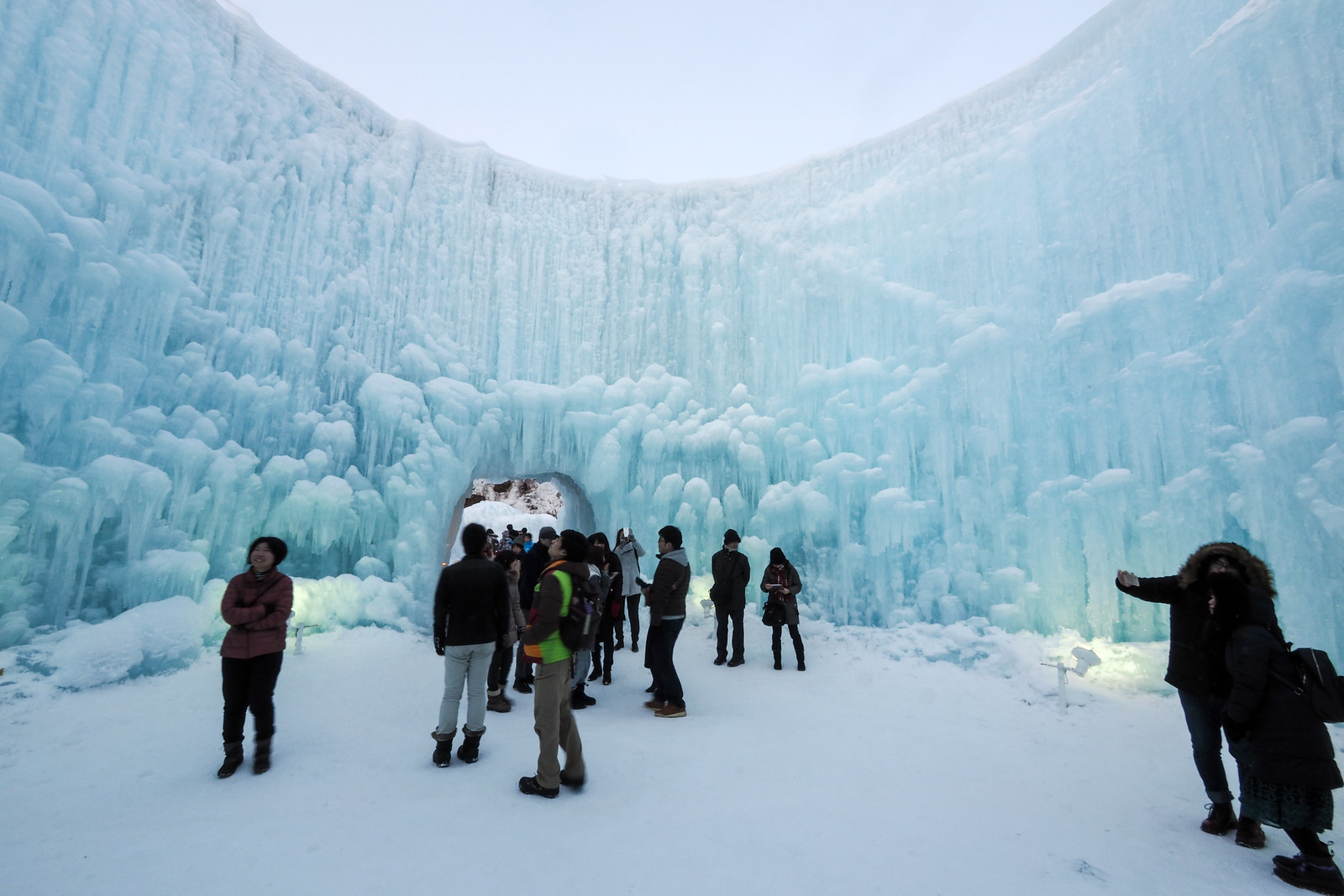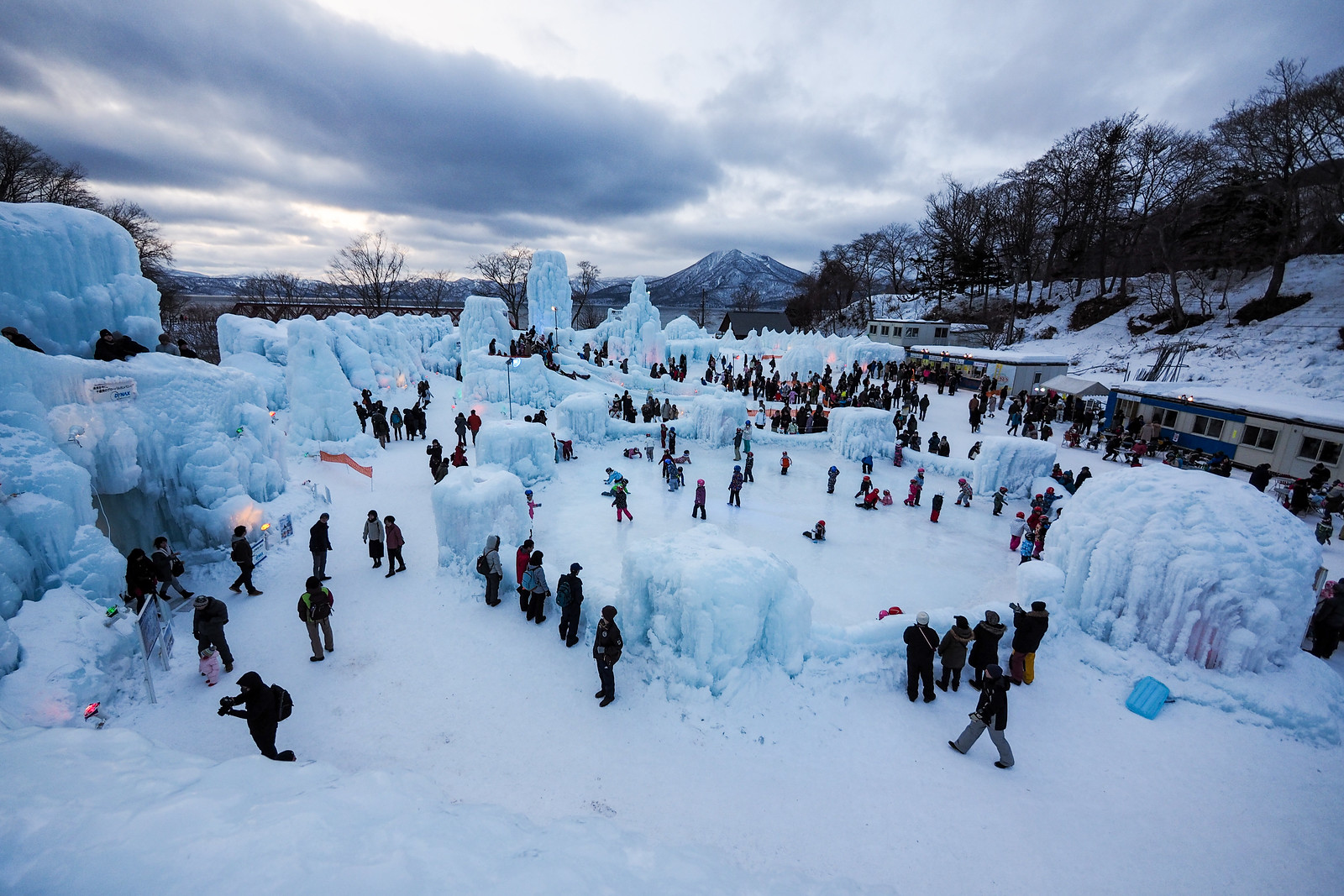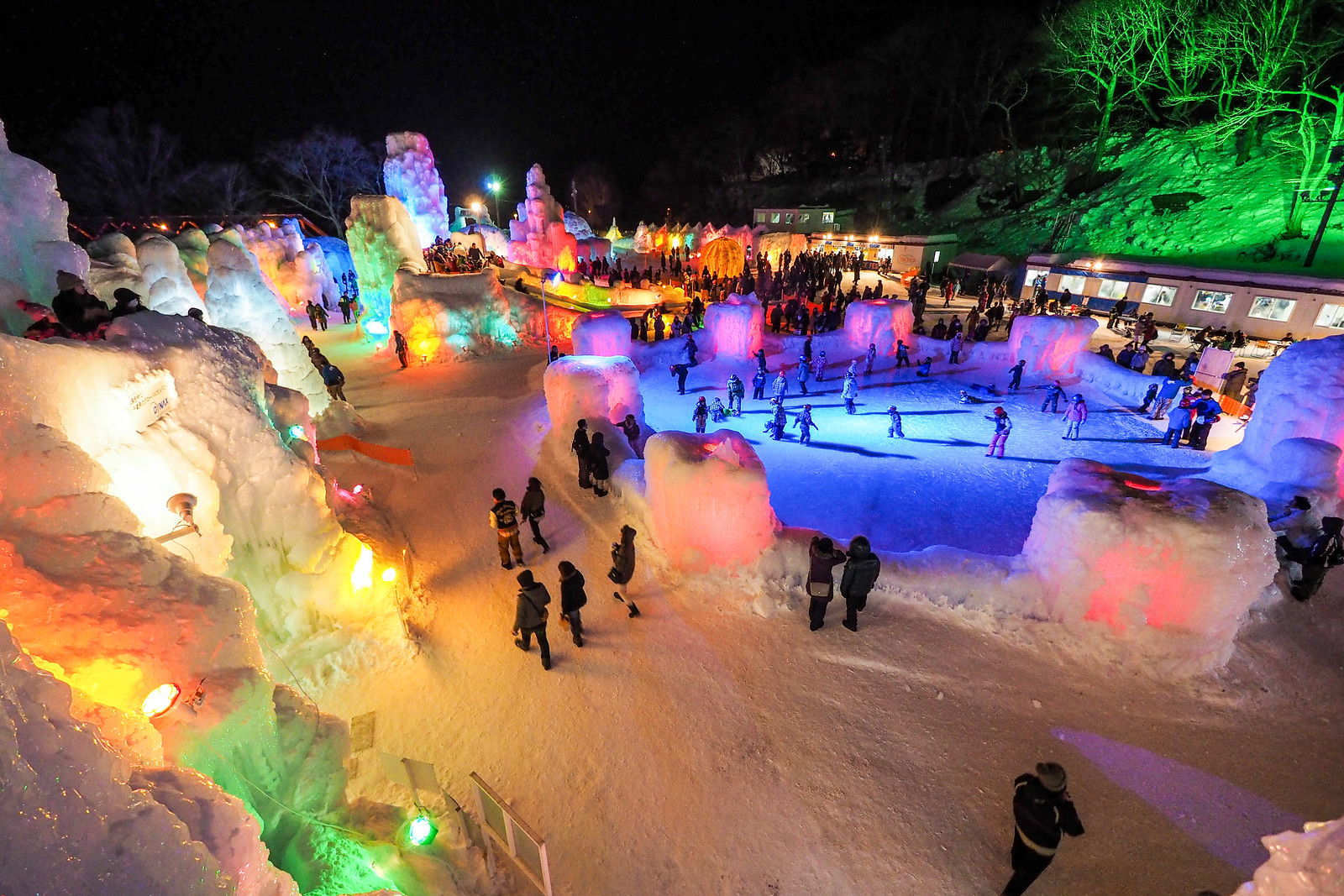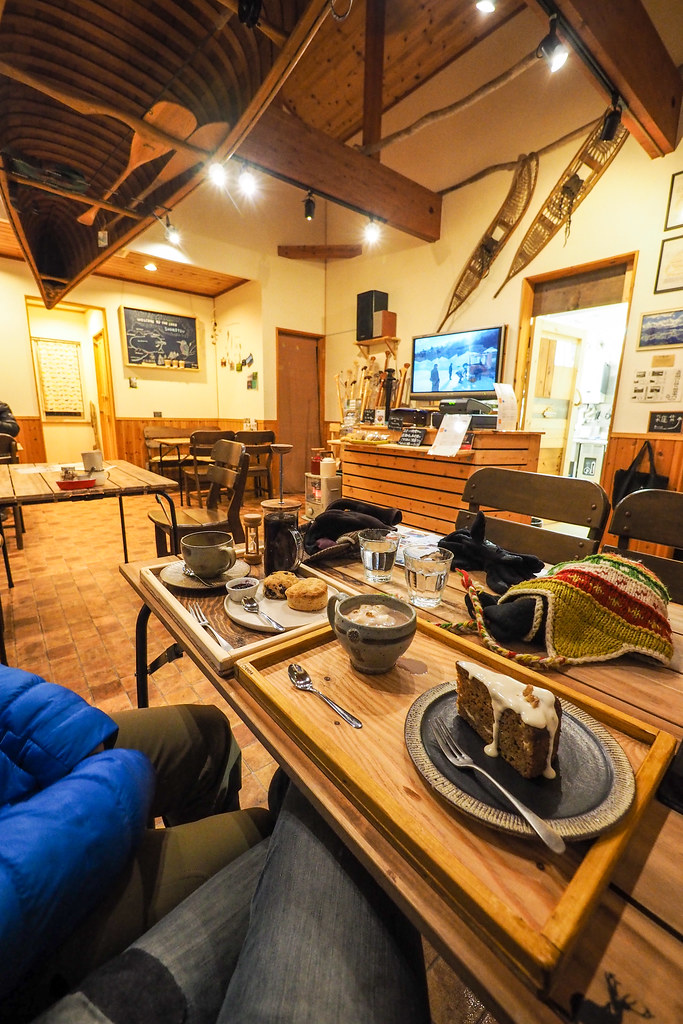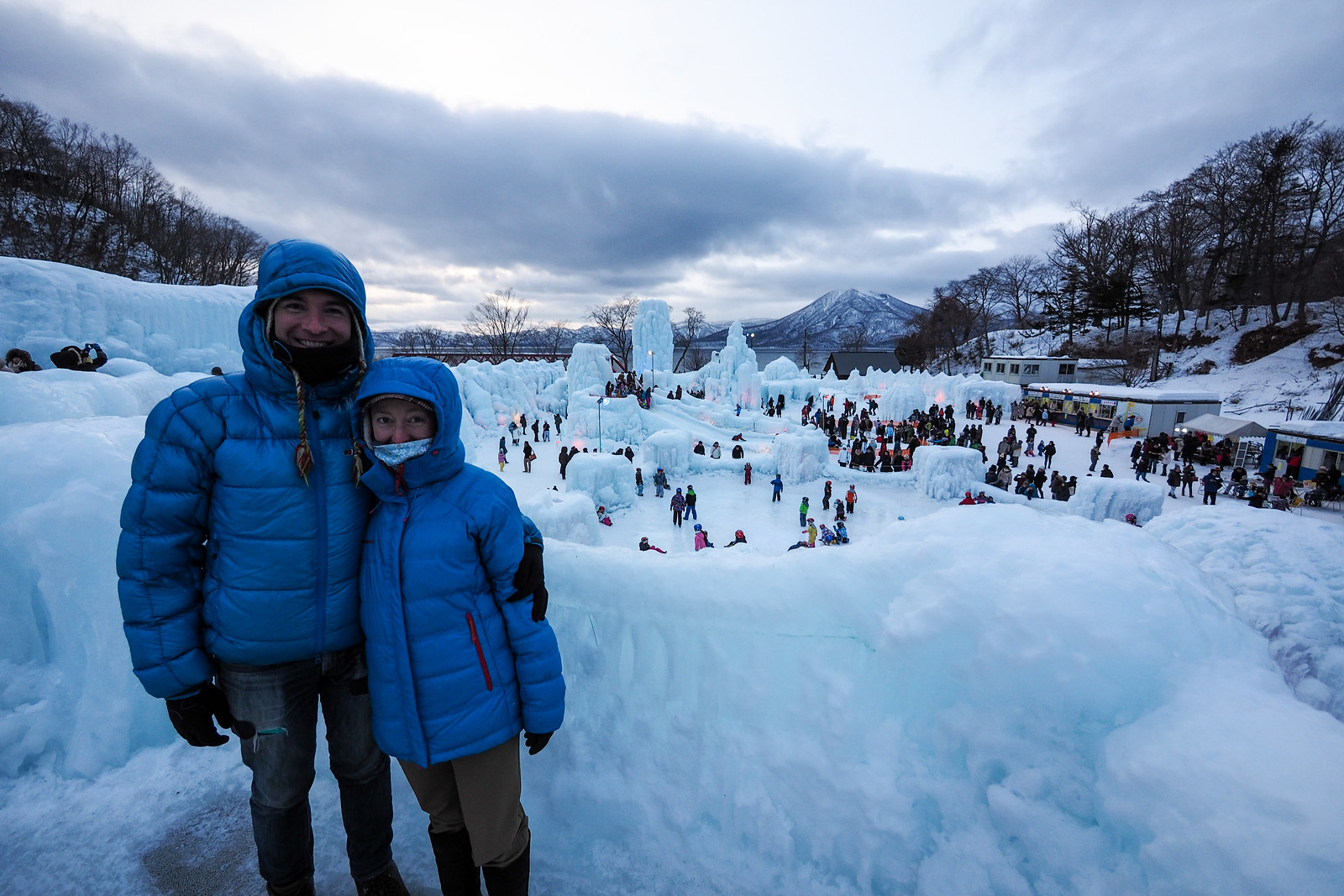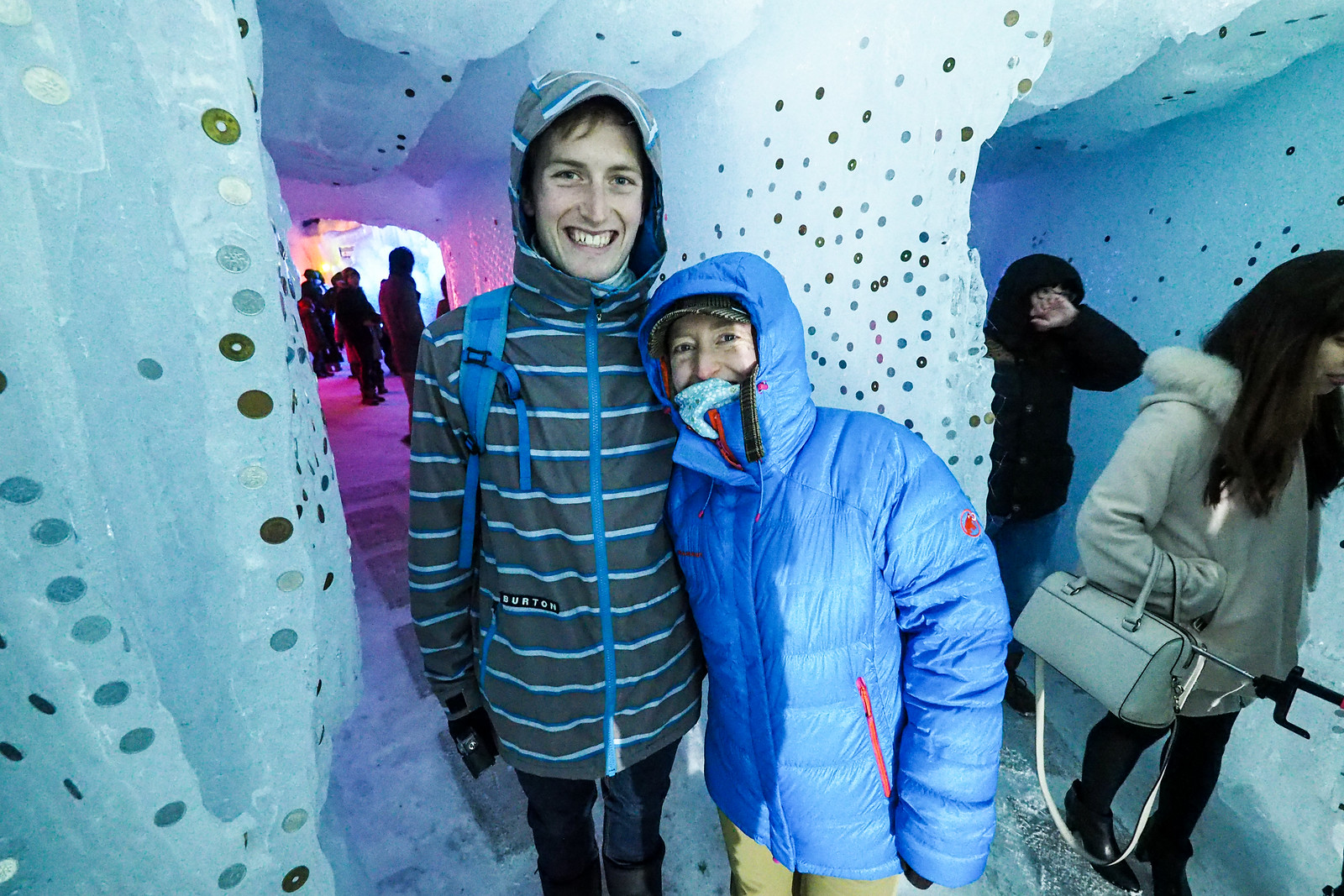I was on the lookout for a relatively easy, straight forward hill near Sapporo, so that Haidee could get some more practice in the backcountry. So, seeing that the guidebook classed Mt. Okotanpe as ‘beginner’, we cheerily headed out towards Lake Shikotsu, looking forward to some easy skinning and nice views on this sub-1,000m mountain. We also figured that because it was supposed to be such a straight forward hill, we’d be up and down it in time for an onsen, and then meeting Haidee’s brother at the Lake Shikotsu Ice Festival in the evening.
We did manage to get an onsen in and meet Josh at the ice festival, but the Okotanpe climb did not pan out quite like we had planned. The first challenge was getting the car parked up on the sidewalk next to the forestry road entrance. We finally got our small 4WD rented Toyota Vitz up with the help of gravity (pointing downhill) and snow piled up against the curb. We also successfully signed in at the start of the route, as all responsible mountain-goers should.
The route up Mt. Okotanpe starts to the left about 50m past the gates to the forestry road, just after the sign-in box. This seems to be a very popular route, so you’ll likely be following snowshoe tracks for most of the way. The first 200m or so is fairly sedate, passing through a small area of well-spaced small trees.
Soon enough, the steep climb begins up to where the ridge flattens out at 746m. By steep, I mean at least 30 degrees in many places, requiring a lot of zigs and zags, and some very sharp kick-turns. As insult to injury, when we were there, new snow had not fallen for about a week, so the snow was slippery, with skins not holding traction very well.
Once above the 746m mark, there was evidence of substantial cornices, and when we were there, parts had moved, exposing the sasa bamboo grass under the snow. We kept to the westerly side of the ridge, among the trees.
It was not much past this point that we decided to head back down. It had taken us much more time that anticipated to get to this point, and not going to an onsen was not really an option. We needed to get back down to the car ASAP so that we’d make it for the 3pm closing time of Marukoma Onsen.
Haidee’s comment on the way down summed up her experience on the steep, crowded-with-trees slope: “Look at me, I’m backcountry grooming,” she said as she side-slid down the slope. “I feel so bad for flattening out the upward track,” she grimaced. But there was nothing to be done for it. She did well to get down on her skis, and was much more at home on the lower slopes where the trees were more sparse and the gradient not as steep.
I am by no means an expert skier, but I found the going easier, reveling in the tight quarters and steep terrain. The guidebook’s “beginner” rating may refer to if you’re on snowshoes. On skis, you’ll either want to be accustomed to skiing in heavily wooded slopes, or be keen to hone your skills on such a slope.
The happy ending was that we did make it in time for the 3pm closing of Marukoma Onsen to day visitors. Marukoma Onsen is known for its outdoor pools where the water level of the pools changes according to the water level of Lake Shikotsu. It really is a special place.
Epilogue
Perhaps the highlight of the day, however, was the Lake Shikotsu Ice Festival. Each year the Shikotsu Village puts on the festival, akin to Sapporo’s snow festival. The difference is that the ice festival is a little more raw. A real labor of love for the villagers, who spend almost 4 months preparing the framing and spraying water on it to form some incredible ice formations.
Haidee’s brother was a little late in arriving, but we made the most of it. The best of the cafe’s we sampled while waiting was the canoe tour outfit Kanoa – they convert their canoe tour operation into a cafe in the winter, and do an amazing hot chocolate (location). A perfect way to end a very nice Saturday outing!









